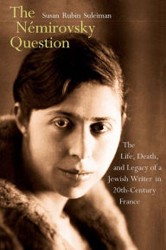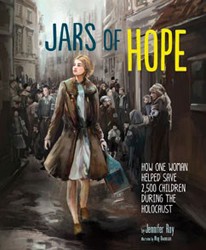By
– January 10, 2012
Who was Irena Sendler andwhy did she risk her life to help save nearly 400 Jewish children from theNazis? Why have her heroic actions only recently come to light? This slim, illustrated biography serves as an insightful introduction to anunsung heroine and her valiant behavior during the Holocaust.
Irena, ayoung, Catholic social worker living in Warsaw during World War II, did her bestin aiding the many refugees that were filtering into Poland by bringing thembread and attending to the wounded. In 1939, when Poland fell to theGermans, Irena, an eyewitness to the squalor and lack of food, feared for thelives of the Jews and immediately joined the resistance movement of the PolishSocialist party. As she watched the city’s Jewish population becomeconfined to the overcrowded walls of the Warsaw Ghetto, Sendler, disguised asnurse, obtained a forged medical pass and dedicated her life to saving thechildren before they could be sent off to Treblinka. With the backing ofan underground organization, Irena organized daring routes of escape throughthe sewer system, smuggled children out through floorboards in ambulances, bodybags and coffins, and transported babies in suitcases and potato sacks. Hoping the children would be reunited with their families, Irena kept secretrecords of their true identities that were carefully concealed in jars thatwere buried in a neighboring garden.
Irena’s life was often marked byfear and despair; when her “work” was discovered by the Gestapo, shewas jailed, tortured and miraculously escaped execution by a firingsquad. On the run at the end of the war, Irena was shunned and labeled a traitorby the Soviet government until the collapse of Communism in Poland in1989. This dramatic tale is paired with arresting, oversized oilillustrations that are often haunting and bleak. Illustrator, BillFarnsworth skillfully captures the fear and darkness of the war. Irena isoften surrounded by a white background and appears luminous. Personalcommentaries from interviews of some of the children Irena saved areinterspersed through the text and add a dimension of realism. Excellentnotes at the back of the book, which include a resource bibliography and adetailed index, make this a worthwhile read. Recommended for ages 8 – 12.
Debra Gold has been a children’s librarian for over 20 years in the Cuyahoga County Public Library System. An active member of the ALA, she has served on many committees including the Caldecott, Newbery and Batchelder committees.



